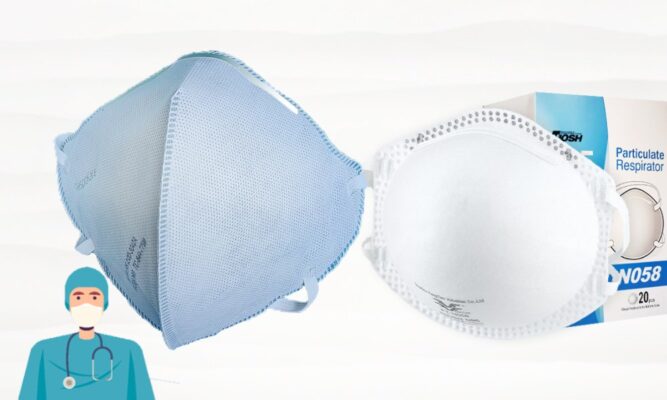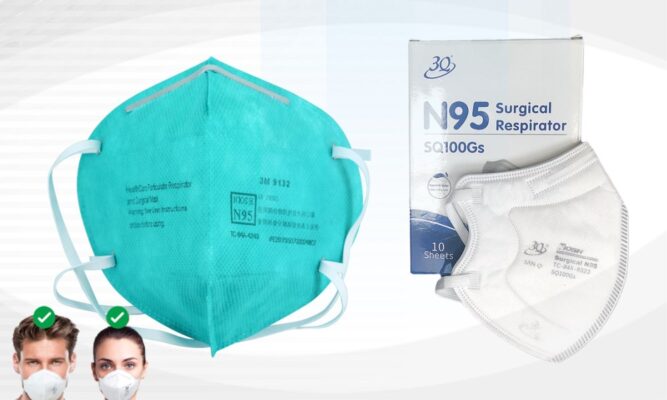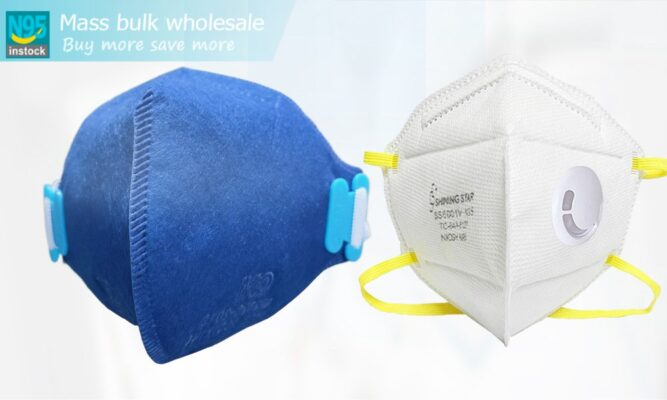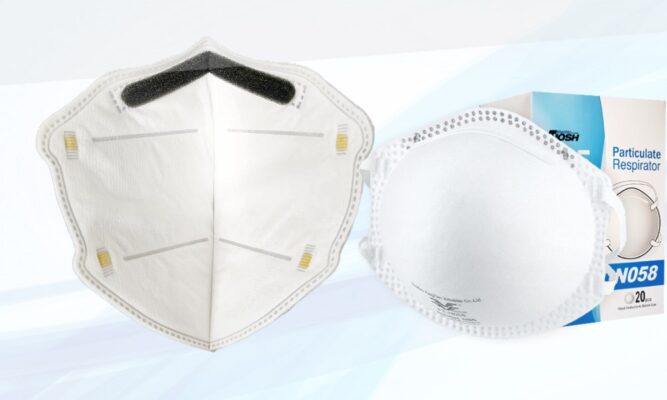Many experts urged individuals to convert from cloth or surgical masks to the more protective N95 and KN95 masks as health officials tried to limit the spread of the highly dangerous Omicron form.
The current Centers for Disease Control and Prevention (CDC) mask guidelines do not specifically endorse one mask over another, but rather state that people should wear the most protective and fitted mask they can at all times. However, on January 14, the EPA issued more specific information about mask variances and acknowledged that some masks (such as N95 masks) are more protective than others (such as cloth and surgical masks).
What is the best facial mask for Omicron?
“Omicron has truly revolutionized the way we protect ourselves from infection,” said Dr. Mohammad Sobhanie, an infectious disease physician at Ohio State University Wexner Medical Center, of the virus’s high infectiability. Wearing a decent mask is one method, as are best practices such as immunization, social separation, and ensuring adequate ventilation.
According to a recent study published in the Proceedings of the National Academy of Sciences, wearing N95 masks instead of surgical masks can minimize the chance of COVID-19 transmission by up to 75 times. According to a review of research released in 2021, N95 reduced the likelihood of health care workers developing COVID-19 by half when compared to surgical masks. (The Wall Street Journal has a helpful infographic that estimates how well various masks prevent transmission.)
Researchers analyzed the course of respiratory droplets and aerosols when participants coughed without face masks, fabric masks, or N95 surgical masks in a study published Jan. 12 in the Journal of Infectious Diseases. They discovered that when individuals did not wear masks, particles traveled approximately 4 feet, compared to approximately 2 feet for fabric masks and less than 1 foot for surgical masks. Research of a similar design published in 2020 discovered that N95 and K95 masks were even better at trapping droplets and aerosols than surgical masks.
“Anything is worth it,” said Kareem Ahmed, an associate professor of mechanical and aerospace engineering at the University of Central Florida and one of the study’s co-authors. “You are restricting your aerosol and droplet transmission to the individual next to you.”
How can I know whether my mask is authentic?
Fake masks can be found everywhere. According to the Centers for Disease Control and Prevention, around 60% of KN95 masks sold in the United States are counterfeit.
The National Institute for Occupational Safety and Health has established requirements for genuine N95 masks (NIOSH). According to NIOSH, a respirator is likely to be phony if it is not NIOSH labelled, has ornamental attachments such as sequins, employs ear slings instead of headbands, or advertises as being suitable for use in minors. (Because NIOSH is an occupational safety agency, its regulations do not apply to children.)
However, there are certain disadvantages to the N95. They can be irritating, especially when worn for extended periods of time. They are also more difficult to find and more expensive than standard surgical or cotton masks. According to Emily Sickbert-Bennett, director of infection prevention at UNC Medical Center, if these barriers make it impossible for you to wear your mask appropriately at all times, you may be better off choosing a low-grade mask that you can commit to wearing.
“The highest quality filter mask you can wear is a fitted N95,” she says. “The best mask you can wear is the one you will wear,” though. N95 is certainly superior under experimental conditions, she adds, but you must also consider how you behave in real life.

What if I still want to wear a fabric or surgical mask?
If you choose to continue wearing fabric or surgical masks, make sure they are as effective as possible.
“The efficiency of a mask is a mix of how the material is filtered and how the face fits,” says Sickbert-Bennett. Your mask should be snugly fitting against your face, with no obvious gaps on the sides, top, or bottom. Simple adjustments, such as knotting ear bands on surgical masks to tighten the fit or wearing fabric masks over surgical masks to cover more of the face, she claims, can increase protection.
According to Sobhanie, different contexts may necessitate the use of different masks. “If you’re in a congested place, you might need to use KN95 or N95 masks,” he says. However, surgical masks may be appropriate in low-risk situations, such as a fast supermarket run in an uncrowded store.
While cloth and surgical masks do not protect users from all germs, research shows that they can help protect others.
After over two years of living with COVID-19, many people are still unsure about which masks to wear and why. In the early days of the epidemic, federal health officials explicitly advised the public not to use masks, in an attempt to conserve supply for health-care personnel.
Although supplies have subsequently stabilized, many Americans continue to use cloth or thinner surgical masks instead of N95 or KN95 respirators. Here’s everything you need to know about wearing a mask during the Omicron wave.
What is the distinction between masks ?
Any mask is preferable to none. However, not all masks are the same.
Because of its snug fit and synthetic material, which comprises of a fine mesh of fibers with electrostatic energy, the N95 respirator can filter up to 95 percent of particles in the air when worn properly. KN95 masks, China’s equivalent of N95 masks, are supposed to fulfill the same filtration standards as N95 masks, although they are manufactured with less regulatory monitoring. Meanwhile, KF94 masks are made in South Korea. They filter up to 94 percent of particles when built to South Korean government specifications and worn correctly.
According to a 2020 study published in the journal JAMA Internal Medicine, surgical masks do not fit as tightly and filter much less well as N95. Cloth masks provide a physical barrier but less filtration than surgical masks.
It is more difficult to determine whether KN95 or KF94 masks are genuine because they are made outside of the United States and thus follow a different regulatory system. However, there are several things to keep an eye out for. The genuine KF94 is built in Korea, while the KN95 made to the most recent requirements should be stamped “GB2626-2019,” according to Wirecutter. The KN95 ending in 2006 with the letter “GB” is made to older standards, but it can be used as long as the shelf life on the box is not exceeded.
If you have any concerns about a certain mask, investigate if it is on the NIOSH-approved N95 masks list. Masks are also being vetted by organizations such as the N95 Project. Engineer Aaron Collins put a variety of masks to the test and reported the results on Twitter.
Can I use the N95 again?
N95 masks should only be used once. If you must reapply the mask, store it in a brown paper bag at room temperature and in a dry spot for a few days. According to specialists at the University of California, Riverside, all of the microorganisms on it should have perished by then. However, if your mask is clearly soiled or has lost its fit, Sobhanie advises you to market it.
Is it necessary to wear a N95 mask when using the Omicron?
Indoor locations that are crowded and poorly ventilated continue to provide the greatest risk of COVID-19 transmission. It is not impossible to take COVID-19 outside, but it is far safer to do so. Still, Sickbert-Bennett believes that wearing a mask outside, such as in the stands at a sporting event or at a packed concert, makes sense in some situations. “We like rules of thumb,” she explained, “but it’s always a spectrum.”







Thank you.